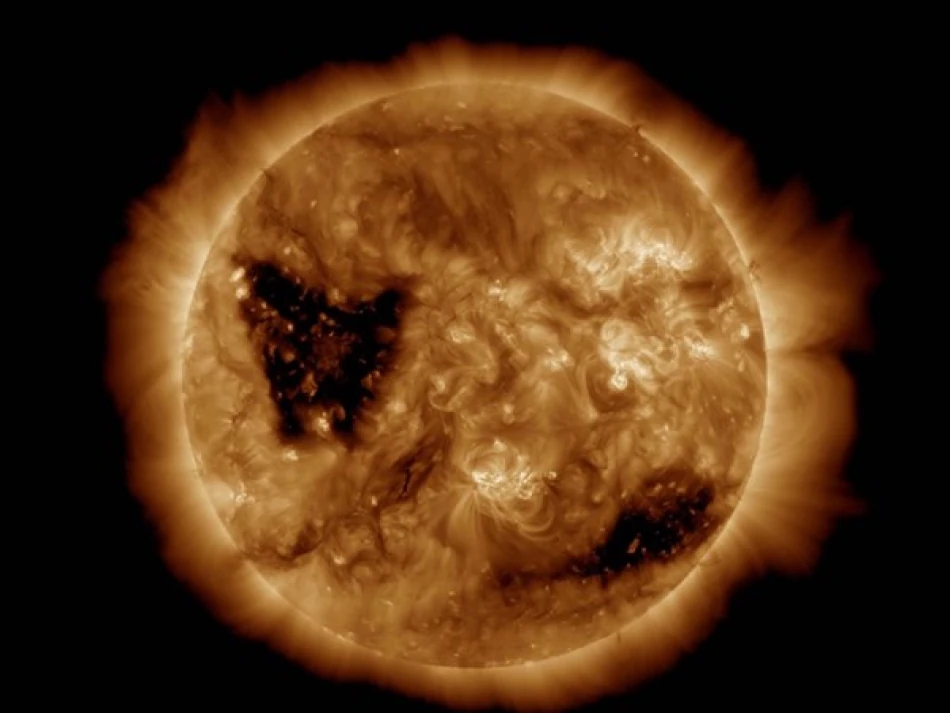
AI-Powered Wind Forecasting: Researchers from NYU Abu Dhabi Harness Artificial Intelligence
UAE Scientists Develop AI That Predicts Solar Wind Four Days Early, Protecting Critical Infrastructure
Researchers at New York University Abu Dhabi have created an artificial intelligence model that can forecast solar wind speeds four days in advance—a breakthrough that could revolutionize space weather protection for satellites, GPS systems, and power grids worldwide. The AI system achieves 45% better accuracy than current methods by analyzing high-resolution solar images rather than traditional text-based data.
Visual Intelligence Transforms Space Weather Forecasting
The research team, led by postdoctoral researcher Dataraj Duri and CASS researcher Shravan Hanasoji, trained their AI model using high-definition ultraviolet images from NASA's Solar Dynamics Observatory combined with historical solar wind records. This image-based approach marks a significant departure from conventional forecasting methods that rely primarily on numerical models and text analysis.
Published in The Astrophysical Journal Supplement Series, the study demonstrates how machine learning can extract predictive patterns directly from solar surface conditions. The AI identifies visual cues in solar imagery that correlate with wind speed changes, providing a more intuitive and accurate forecasting mechanism.
Superior Performance Metrics
The new system delivers impressive performance improvements: 45% better accuracy compared to existing operational methods and 20% improvement over traditional AI models. This enhanced precision translates to more reliable early warning systems for space weather events that can disrupt modern technology infrastructure.
Critical Infrastructure Protection at Stake
Solar wind variations pose significant threats to satellite operations, GPS navigation systems, and electrical power grids. When high-speed solar particles interact with Earth's magnetosphere, they can induce geomagnetic storms capable of damaging sensitive electronics and disrupting communication networks.
The economic implications are substantial. The 1989 Quebec blackout, caused by a geomagnetic storm, left six million people without power for nine hours and cost billions in damages. More recently, SpaceX lost 40 Starlink satellites in February 2022 due to increased atmospheric drag from solar activity—highlighting the vulnerability of modern space infrastructure.
Four-Day Warning Window Creates New Possibilities
The four-day prediction horizon provides unprecedented preparation time for satellite operators and utility companies. This advance warning allows for proactive measures such as temporarily shutting down sensitive equipment, adjusting satellite orbits, or implementing protective protocols for power grid operations.
UAE's Growing Space Technology Leadership
This breakthrough reinforces the UAE's emergence as a significant player in space science and technology. The country has invested heavily in space capabilities, from the successful Mars Hope mission to ambitious lunar exploration plans. NYU Abu Dhabi's contribution to space weather forecasting aligns with the nation's strategy to become a knowledge-based economy leader.
The university has established over 90 research laboratories and faculty projects, collectively producing more than 9,200 academic papers, articles, and books. This research output demonstrates the institution's growing influence in global scientific discourse.
Commercial and Strategic Implications
The improved forecasting capability could spawn new commercial applications in space weather services. Insurance companies covering satellite launches and operations may adjust risk models based on enhanced prediction accuracy. Similarly, airlines operating polar routes—where communication disruptions from solar activity are common—could benefit from more precise space weather warnings.
Government and military applications are equally significant. Defense satellites and communication systems require robust protection from space weather events. The four-day warning period enables military planners to implement contingency protocols and ensure mission-critical systems remain operational during solar storms.
Next Steps and Scalability
The research team's success with image-based AI analysis opens possibilities for integrating additional data sources, including solar magnetic field measurements and coronal mass ejection observations. Future iterations could extend prediction horizons even further while maintaining or improving accuracy levels.
As space-based infrastructure continues expanding—with thousands of new satellites planned for deployment—the demand for reliable space weather forecasting will only intensify. This UAE-developed technology positions the region at the forefront of a critical capability that protects billions of dollars in space assets and terrestrial infrastructure.
 Layla Al Mansoori
Layla Al Mansoori







